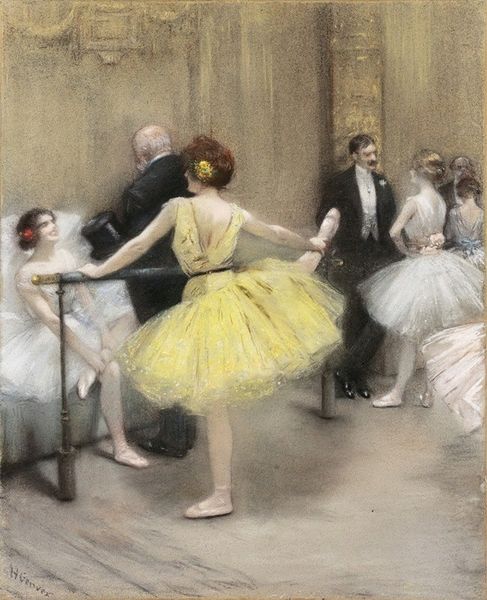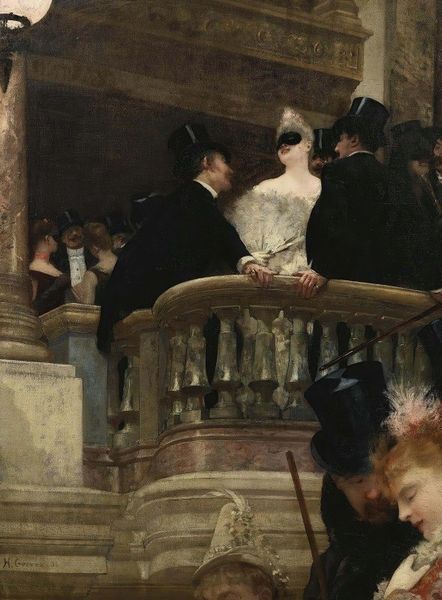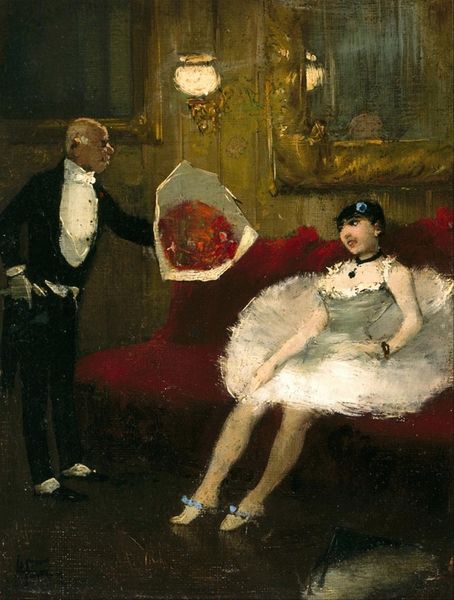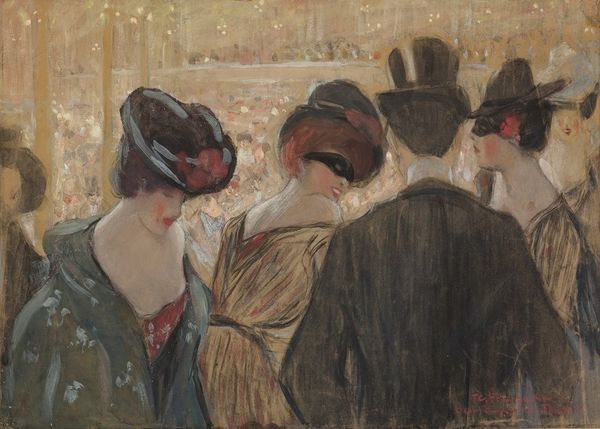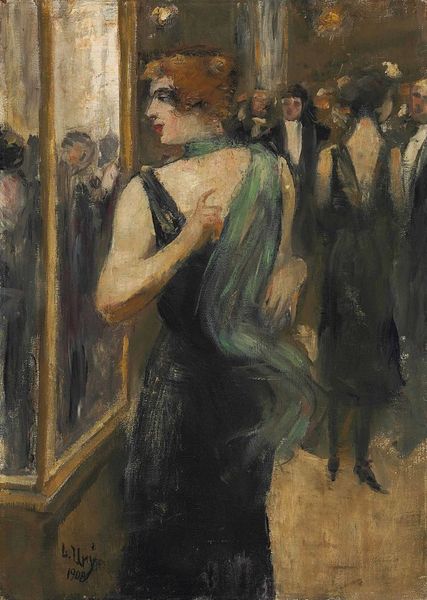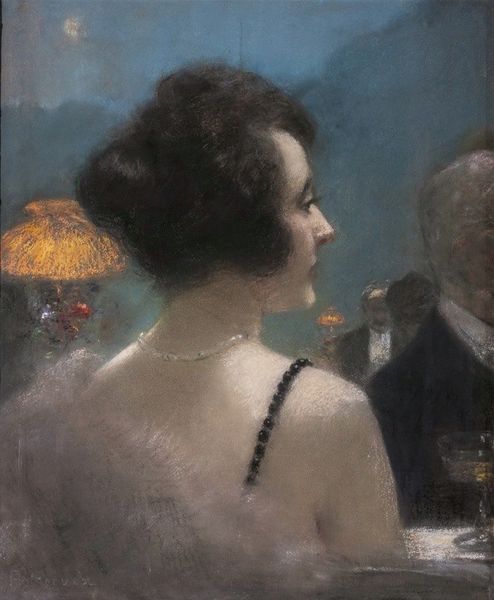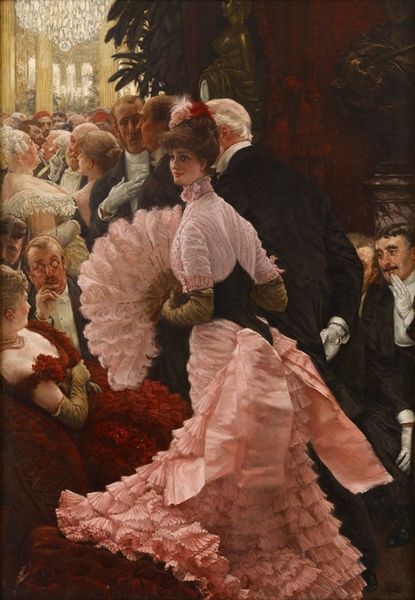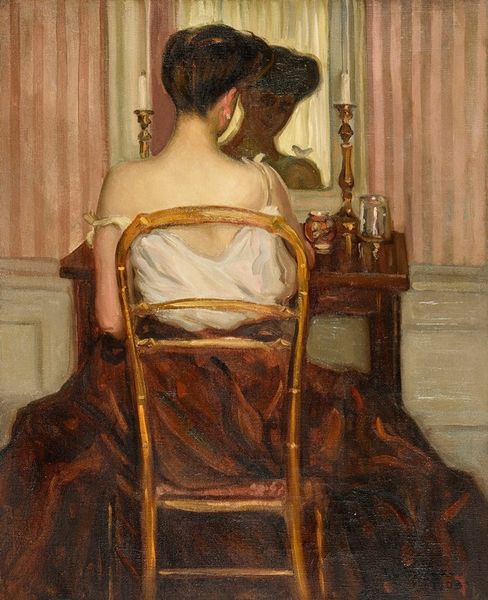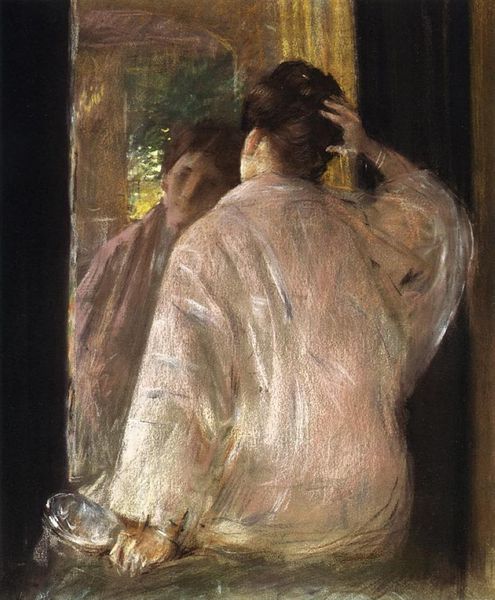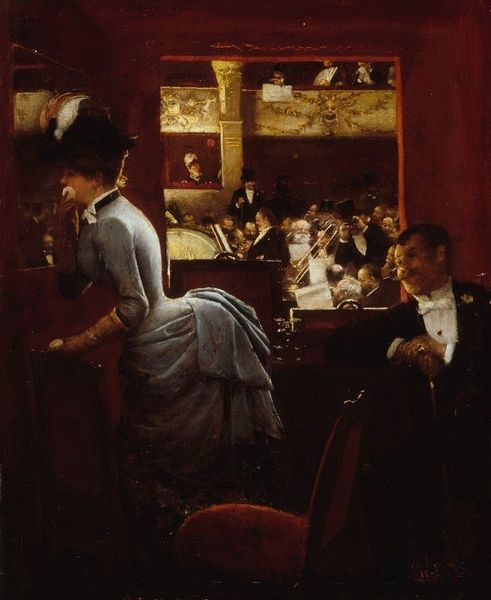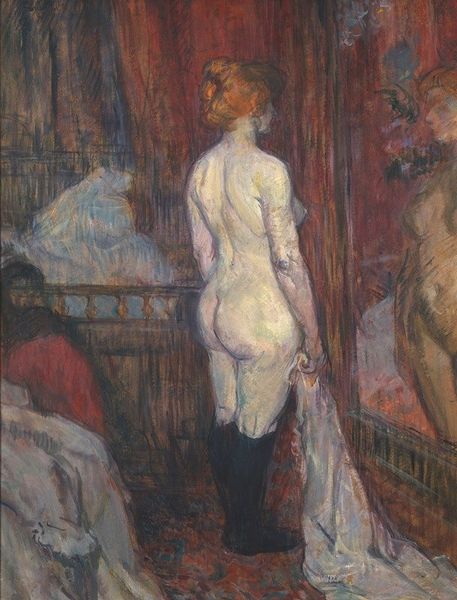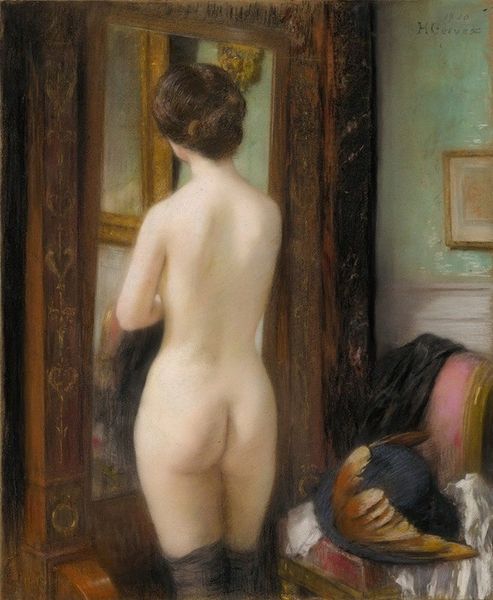
painting, oil-paint
#
gouache
#
painting
#
impressionism
#
oil-paint
#
oil painting
#
romanticism
#
genre-painting
#
nude
#
watercolor
Copyright: Public Domain: Artvee
Curator: Henri Gervex’s work, believed to be titled "Behind the curtain at the ballet", presents us with a somewhat voyeuristic perspective. The light catches the edge of a wall and spotlights a ballerina, but the palette gives the piece a sepia-toned quality that feels a bit claustrophobic. Editor: My immediate reaction is one of curiosity regarding the textures—smooth wall contrasted against the incredibly light and almost cloud-like quality of the dancer's tulle skirt. I’m drawn to considering the fabrication process here; the contrast implies such diverse skills. Curator: Indeed. The contrast is striking, and contributes greatly to its aesthetic success. Gervex utilizes color in a subtle way, emphasizing the purity of form of the ballerina's tutu while it also alludes to a wider artistic heritage by integrating the conventions of Romanticism with burgeoning Impressionistic sensibilities. The overall composition feels carefully calibrated to generate both a sense of spontaneity and structural rigor. Editor: Considering that Romanticism and Impressionism demanded particular relationships between artist and sitter/subject, how do you believe Gervex engages with this in the means of production for his painting? I am interested in how his potential intimate process allowed him to portray the labour involved with these dancers, capturing a glimpse of a candid, fleeting moment behind stage. Curator: That's an intriguing observation, highlighting labor in art-making and behind the scenes. By focusing on the raw, physical reality behind the illusion of dance, it certainly hints at exposing an institutional critique, reflecting deeper societal issues. Furthermore, we can appreciate how it contributes to our contemporary appreciation of this theme that is embedded through his aesthetic project. Editor: Precisely, considering the implications on stage workers during this period would demand understanding the type of conditions women had to go through. Beyond what is evident formally, what details capture that lived, felt, labor-intensive moment in painting the most, considering it’s “Behind the Curtain”? Curator: A keen consideration; Gervex effectively captures that elusive tension between exposure and containment. This tension within a carefully managed and regulated space gives the piece a quiet power. Editor: It's a sentiment well expressed, allowing me to consider further not just the structure but also that physical, and sociopolitical reality too. The work has prompted reflection on how paintings’ intrinsic formal details reflect wider structures.
Comments
No comments
Be the first to comment and join the conversation on the ultimate creative platform.
